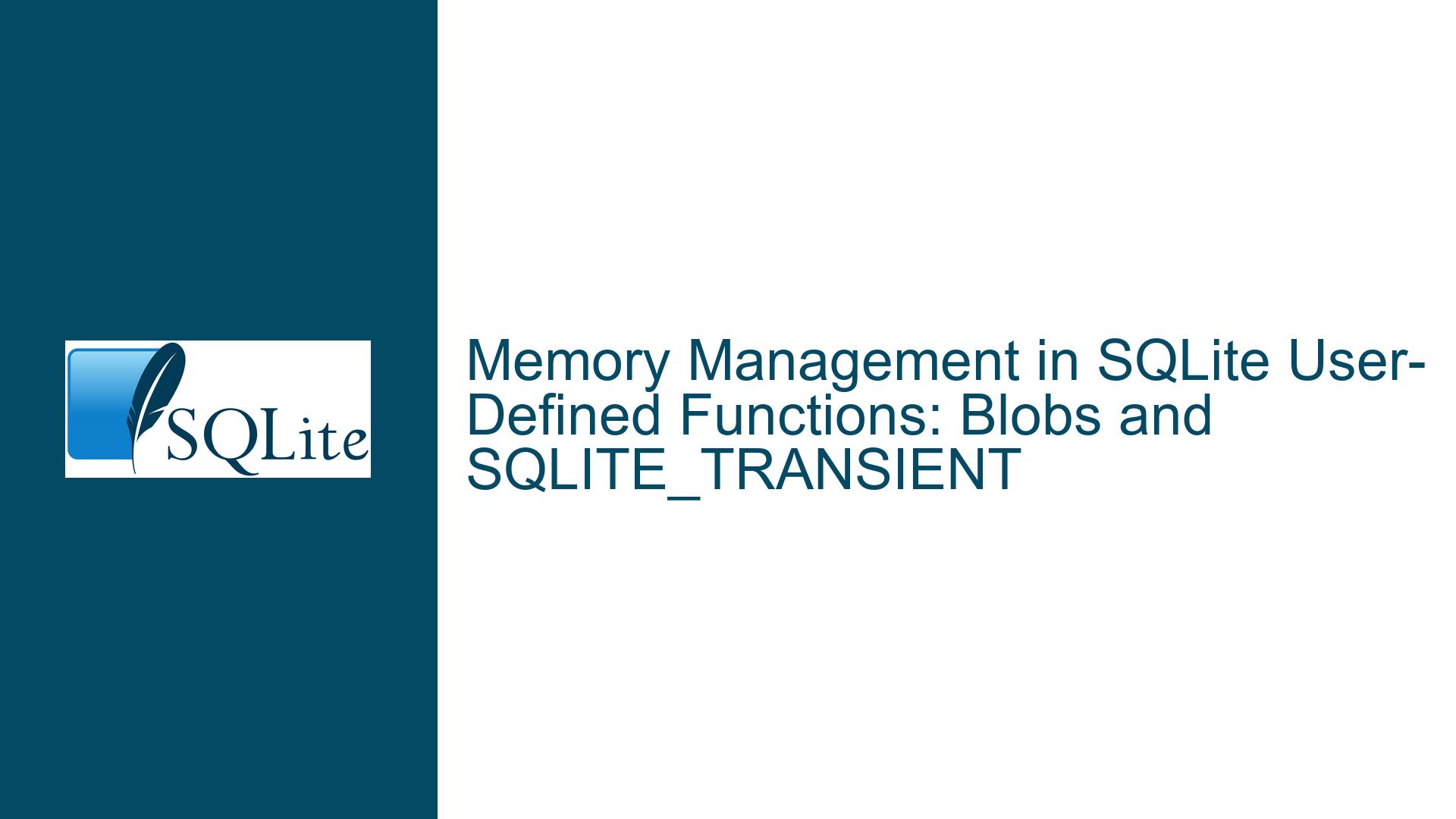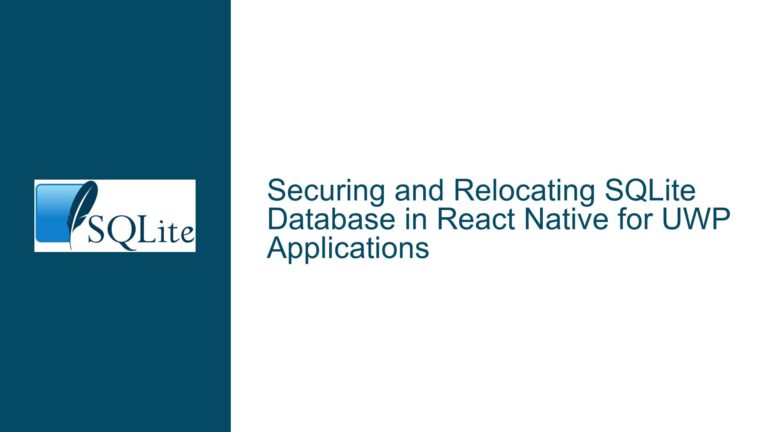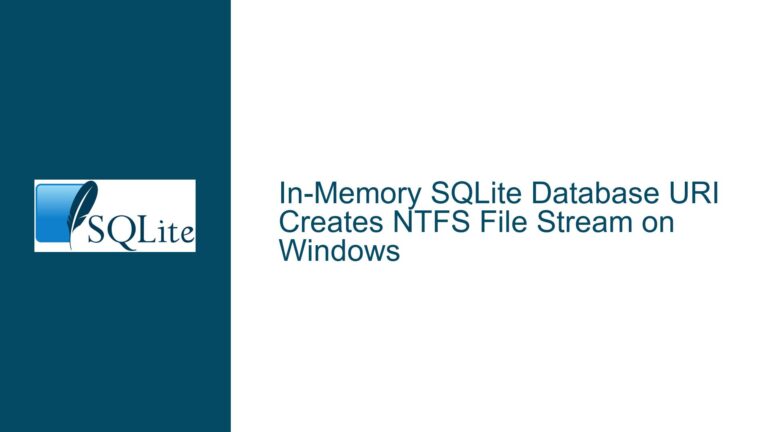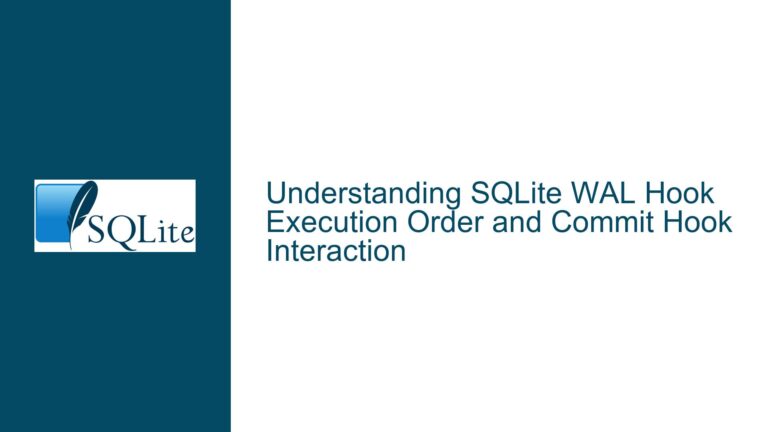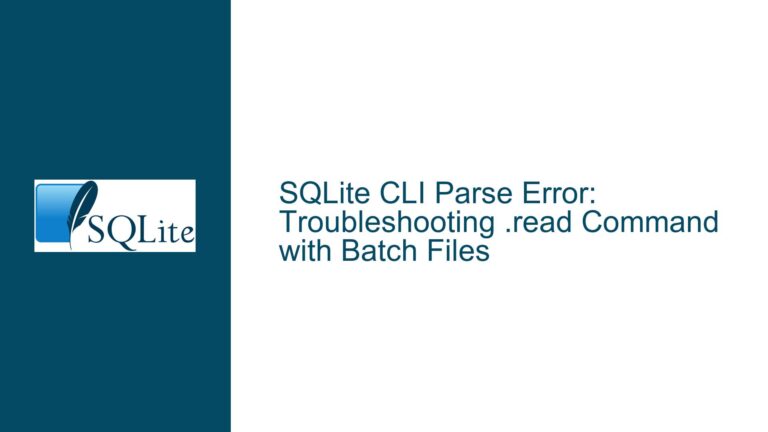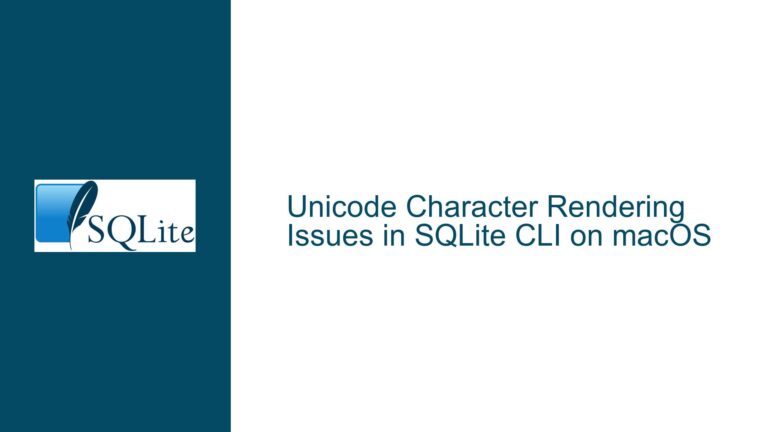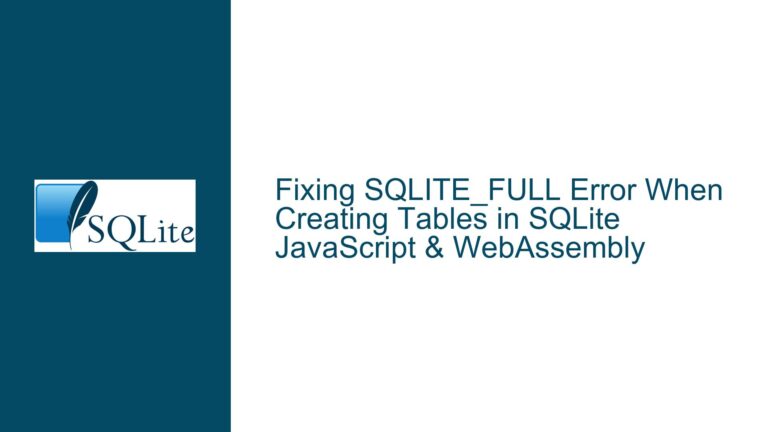Memory Management in SQLite User-Defined Functions: Blobs and SQLITE_TRANSIENT
Memory Allocation and Deallocation in SQLite User-Defined Functions
When working with SQLite user-defined functions (UDFs), particularly those that return binary large objects (blobs), understanding memory management is crucial. The core issue revolves around how memory allocated within a UDF should be managed when returning a blob using the sqlite3_result_blob function. The primary concern is whether to use SQLITE_TRANSIENT or a custom destructor function like free to handle memory deallocation. This decision impacts both performance and memory safety, especially when the UDF is called multiple times within the same SQL statement.
The sqlite3_result_blob function is used to set the result of a UDF to a blob. It takes four parameters: the SQLite context (ctx), a pointer to the blob data (blob), the size of the blob (size), and a destructor function or flag (destructor). The destructor parameter determines how SQLite should handle the memory associated with the blob after it is no longer needed. The two main options are using SQLITE_TRANSIENT, which instructs SQLite to make a copy of the blob, or passing a custom destructor like free, which allows SQLite to directly manage the original memory.
The choice between these two approaches depends on several factors, including the lifetime of the memory allocation, the frequency of UDF calls, and the performance requirements of the application. Misunderstanding these factors can lead to memory leaks, double frees, or inefficient memory usage. This post will explore the nuances of each approach, the potential pitfalls, and the best practices for managing memory in SQLite UDFs.
Interplay Between SQLITE_TRANSIENT and Custom Destructors
The decision to use SQLITE_TRANSIENT or a custom destructor like free hinges on the ownership and lifetime of the memory allocated for the blob. When SQLITE_TRANSIENT is used, SQLite creates a copy of the blob data, and the original memory can be freed immediately after the function call. This approach is safer in scenarios where the memory is allocated on the stack or where the UDF might be called multiple times within the same SQL statement. However, it incurs the overhead of an additional memory allocation and copy operation.
On the other hand, passing a custom destructor like free allows SQLite to take ownership of the original memory. This avoids the need for a copy, making it more memory-efficient and potentially faster. However, this approach requires careful handling to ensure that the memory is not freed prematurely or multiple times. For example, if the UDF is called multiple times within the same SQL statement, the custom destructor will be called multiple times, which could lead to issues if the same memory address is reused.
The distinction between SQLITE_TRANSIENT and a custom destructor becomes particularly important when dealing with dynamically allocated memory (e.g., using malloc) versus stack-allocated memory (e.g., using a local array). For stack-allocated memory, SQLITE_TRANSIENT is necessary because the memory will be automatically freed when the function exits, and SQLite would otherwise attempt to use invalid memory. For dynamically allocated memory, the choice depends on whether the performance gain from avoiding a copy outweighs the complexity of managing memory ownership.
Optimizing Memory Usage and Performance in SQLite UDFs
To optimize memory usage and performance in SQLite UDFs, it is essential to understand the memory subsystem’s behavior and the implications of each approach. When using SQLITE_TRANSIENT, the sequence of operations involves allocating memory for the blob, copying the data, and then freeing the original memory. This results in additional overhead but ensures that SQLite has a valid copy of the data that it can manage independently.
When using a custom destructor like free, the sequence involves allocating memory for the blob and passing ownership to SQLite, which will call the destructor when the data is no longer needed. This approach minimizes memory usage and avoids the overhead of copying data but requires careful management to prevent memory-related issues.
The following table summarizes the key differences between using SQLITE_TRANSIENT and a custom destructor:
| Approach | Memory Allocation | Memory Copy | Memory Ownership | Performance Impact | Safety Considerations |
|---|---|---|---|---|---|
SQLITE_TRANSIENT | Original + Copy | Yes | SQLite | Higher overhead | Safer, avoids use-after-free |
| Custom Destructor | Original only | No | SQLite | Lower overhead | Requires careful management |
In practice, the choice between these approaches should be guided by the specific requirements of the application. For performance-critical applications where memory usage must be minimized, using a custom destructor may be preferable. However, for applications where safety and simplicity are more important, SQLITE_TRANSIENT is often the better choice.
Additionally, it is worth noting that SQLite’s memory management behavior can be influenced by other factors, such as the use of prepared statements and the SQLite heap. When SQLite allocates memory using SQLITE_TRANSIENT, it does so from its own heap, which allows it to manage the memory more efficiently, including the ability to reallocate memory if necessary. In contrast, when a custom destructor is used, SQLite has limited control over the memory and can only read, write, or call the destructor.
In conclusion, managing memory in SQLite UDFs requires a careful balance between performance and safety. By understanding the implications of each approach and considering the specific requirements of the application, developers can make informed decisions that optimize both memory usage and performance. Whether using SQLITE_TRANSIENT or a custom destructor, the key is to ensure that memory is managed correctly to avoid leaks, double frees, and other memory-related issues.
